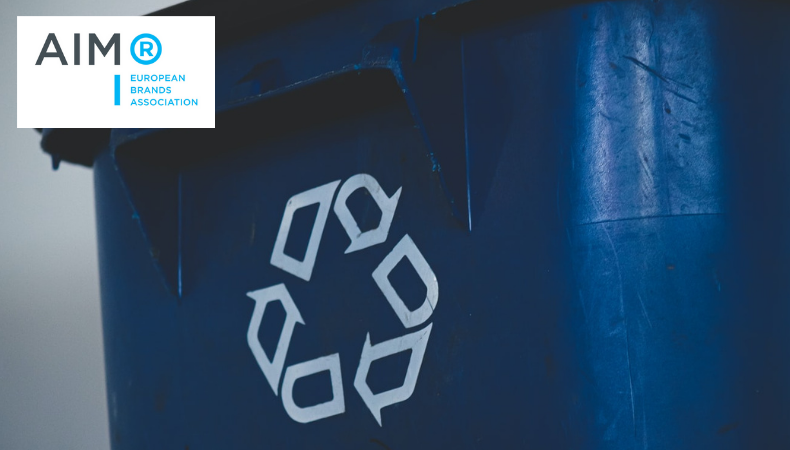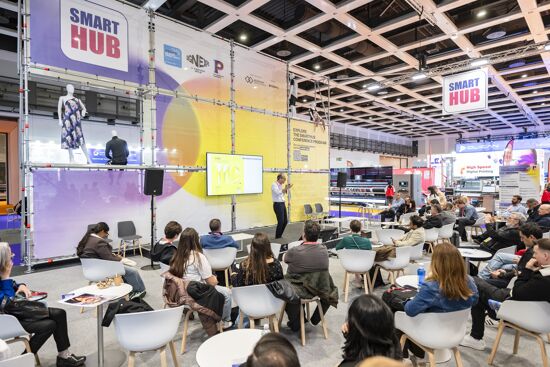Water marking for recycling
.png?width=750)
Here’s a clever idea: watermark packaging so that a sorting system can be more accurate and recycling processes more efficient. That’s what AIM, the European Brands Association, is encouraging companies to do.
AIM represents manufacturers of branded consumer goods in Europe, and is particularly concerned with matters relating to their ability to design, distribute and market their brands. Directly or indirectly through its corporate and national association members, the group represents 2500 businesses ranging from small to medium sized enterprises through to multinationals. The group has set up a project called Holy Grail 2.0, which sounds like it might well be a joke. Joke or not, over 85 companies have signed up to Holy Grail 2.0, most recently Sun Chemical, a leading maker of printing inks, coatings, pigments, polymers, liquid and, solid compounds, and application materials.
Together the members of Holy Grail 2.0 are working to prove the viability of digital watermarking technologies to improve recycling. The project that preceded it was Holy Grail 1.0 conducted as part of the New Plastics Economy programme run by the Ellen MacArthur foundation. It was this group that identified digital watermarking to be the most promising contender for improving post-consumer recycling.
Any organisation can join the Holy Grail 2.0 Charter, which is essentially a platform run by AIM. The plan is to expand the scale and the scope of the project, initially with validation of different water marking technologies at a test sorting facility. This will be done on a “semi-industrial scale” with brand owners, retailers, technology and packaging suppliers working together to see how well packaging modified with digital watermarks performs in an industrial context. Assuming all goes well the next step will be to test on a national scale.
This is a fascinating initiative, but it needs to be carefully managed. Without some standardisation either in the digital watermarks or with the scanning and processing management, chaos could undermine effective implementation. This is especially true in developed economies where there are many different approaches to recycling. The eighty plus member organisations will need to work closely together to ensure commonality and effective roll-out of the technologies. Competitive instincts will need to be put aside, if this is to work. This is not beyond the bounds of possibility as AIM is already working with most of the companies involved. There has been no mention of standardising anything, but standards in digital watermark design and scanning performance expectations would help drive widespread adoption of the concept and the methodologies involved.
Source Information: This article was produced by the Verdigris Project, an industry initiative intended to raise awareness of print’s positive environmental impact. This weekly commentary helps printing companies keep up to date with environmental standards, and how environmentally friendly business management can help improve their bottom lines. Verdigris is supported by the following companies: Agfa Graphics, EFI, Fespa, Fujifilm, HP, Kodak, Miraclon, Ricoh, Spindrift, Splash PR, Unity Publishing and Xeikon.
Please also include the Verdigris logo and a link to this website. If you don't already have our logos, you can get them by downloading the "Publishers Bundle" from our Archive page. And don’t forget terms of the Creative Commons license at the footer of the site. Enjoy!
Topics
Interested in joining our community?
Enquire today about joining your local FESPA Association or FESPA Direct
Recent news

Industry Experts Explore the Evolution of Smart Manufacturing in the Textile Industry
A FESPA SmartHUB roundtable at Personalisation Experience 2025 discussed smart manufacturing's transformative impact on the textile industry. Experts highlighted the shift to on-demand customisation, driven by digital printing, data analytics, and automation. Key takeaways included enhanced machine control, significant waste reduction through intelligent software and colour management, and improved sustainability via energy efficiency and near-shoring, ensuring agility and environmental responsibility in textile production.

FESPA 2025 gathers leading visionaries from across the speciality print industry in Berlin
FESPA Global Print Expo 2025, European Sign Expo and Personalisation Experience (6 – 9 May 2025, Messe Berlin, Germany) welcomed Visionaries from across the speciality print industry to shape the future of print, develop forward-thinking business strategies, and explore innovative ways to translate emerging industry trends into tangible growth opportunities.

Exploring Cutting-Edge Textile Printing Innovation with Adobe Print Engine 7
Adobe PDF Print Engine 7, launched at FESPA Global Print 2025, significantly advances textile printing. Debbie McKeegan shares how it automates non-white substrate management and RGB colour handling, expands colour gamuts with in-RIP multicolour transparency blending, and streamlines workflows for efficiency and sustainability. This update boosts customisation, reduces waste, and positions businesses at the forefront of digital print innovation.

FESPA Global Print Expo 2025 - Overall Highlights
FESPA Global Print Expo, Europe's leading print and signage exhibition returned to Messe Berlin from 6 - 9 May 2025.